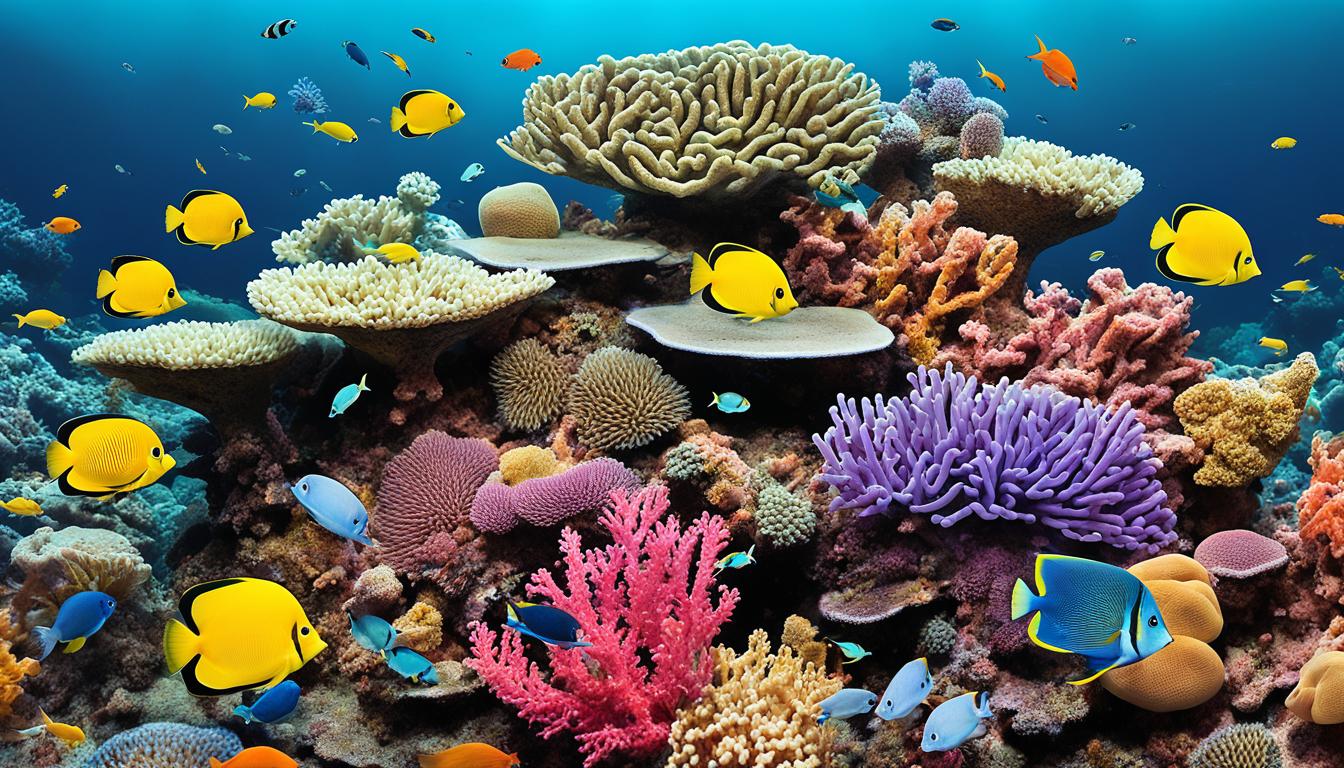Kosovo Biodiversity: Animal and Plant Species and What Is Under Threat
Kosovo, located in the heart of the Balkan Peninsula, is a hidden gem when it comes to biodiversity. This small, mountainous country boasts a diverse range of ecosystems and habitats, making it a haven for countless species of plants and animals. With its unique combination of continental and Mediterranean climates, Kosovo offers a rich and varied environment for wildlife to thrive.
Forests are the dominant terrestrial ecosystem in Kosovo, covering approximately 30% of the territory. These lush woodlands provide crucial shelter and protection for hundreds of plant and animal species, both nationally and internationally significant. From majestic mountains to rippling rivers, Kosovo’s natural landscapes offer a multitude of habitats that support a remarkable diversity of life.
Key Takeaways:
- Kosovo is home to a diverse range of ecosystems and habitats, making it a hotspot for biodiversity conservation.
- Forests cover approximately 30% of the country, providing shelter and protection for numerous plant and animal species.
- The unique combination of climates in Kosovo supports a rich and varied environment for wildlife.
- Kosovo has established two national parks to preserve and protect its rich biodiversity.
- Sustainable practices and responsible tourism play a significant role in biodiversity conservation in Kosovo.
Diversity of Forests in Kosovo
The forests of Kosovo are a vital component of its rich biodiversity. These forests cover approximately 30% of the country’s territory and encompass a diverse range of tree species, including deciduous trees, conifers, bushes, and shrubs. With 139 orders classified in 63 families, 35 genera, and 20 species, the forest flora of Kosovo is incredibly varied and significant.
One of the primary roles of these forests is to provide shelter and protection to hundreds of plant and animal species of national and international importance. They play a critical role in maintaining the delicate balance of the ecosystem and preserving the country’s biodiversity.
Unfortunately, Kosovo has faced extensive illegal deforestation, resulting in the loss of between 5% and 10% of its forest area since the end of the 1998-1999 war. However, efforts are being made to combat this decline and enhance forest conservation initiatives.
The Kopaonik Mountains, located in the heart of Kosovo, boast the highest forest cover in the country. This mountain range is home to approximately 1,600 plant species, contributing significantly to the country’s overall biodiversity.
The conservation and protection of forests in Kosovo are supported by specific laws outlined in the Constitution of Kosovo. These laws emphasize the importance of safeguarding the unique and fragile ecosystems found within the country’s forests.
| Forest Statistics | Details |
|---|---|
| Forest Coverage | Approximately 30% of Kosovo’s territory |
| Forest Flora | 139 orders, 63 families, 35 genera, and 20 species |
| Key Role | Providing shelter and protection to numerous plant and animal species |
| Illegal Deforestation | Loss of 5% to 10% of forest area since 1998-1999 war |
| Kopaonik Mountains | Home to approximately 1,600 plant species |
Endangered Plant Species in Kosovo
In the forests of Kosovo, there are several flora species that are currently facing the risk of extinction, making them endangered. According to the classification by the Kosovo Environmental Protection Agency, these plants are critically important to the biodiversity of Kosovo and require urgent measures for their protection and conservation.
Among the endangered plant species in Kosovo are:
- The poet’s daffodil, with its delicate white petals and golden cup, is highly sought after by collectors and flower enthusiasts.
- The strikingly beautiful didier’s tulip boasts vibrant colors and unique patterns, making it a popular sight during the blooming season.
- The globe-flower, also known as Trollius europaeus, is a captivating wildflower characterized by its vibrant yellow petals.
- The Albanicum lily showcases elegant pink and white flowers, adding a touch of grace to the landscapes of Kosovo.
- The graeca lily is a rare and endangered species that displays stunning orange and yellow flowers, captivating all who encounter it.
- The Balkan maple is a captivating tree species known for its vibrant autumn foliage and its importance in providing habitat for various animal species.
Efforts are currently underway to protect and conserve these endangered plant species in Kosovo. Conservation organizations, environmental agencies, and local communities are working together to establish protected areas, implement sustainable practices, and promote awareness about the importance of preserving these unique plants for future generations.
| Endangered Plant Species | Appearance | Status |
|---|---|---|
| Poet’s Daffodil | Delicate white petals with a golden cup | Endangered |
| Didier’s Tulip | Vibrant colors and unique patterns | Endangered |
| Globe-flower | Vibrant yellow petals | Endangered |
| Albanicum Lily | Elegant pink and white flowers | Endangered |
| Graeca Lily | Orange and yellow flowers | Endangered |
| Balkan Maple | Vibrant autumn foliage | Endangered |

Rich Fauna in Kosovo
Kosovo, with its diverse geographical features and favorable conditions, boasts a rich and vibrant fauna. From the fields and hilly areas, where boars, deer, rabbits, ravens, magpies, and various bird species thrive, to the mountainous regions, where field partridges, quails, pheasants, squirrels, storks, eagles, vultures, hawks, and other bird species can be found.
The rare animal species in Kosovo include brown bears, wolves, roe deer, lynxes, and wild and forest hen grouse. The high mountains of Kosovo offer an ideal habitat for these animals, allowing them to thrive and contribute to the country’s biodiversity. The rivers and lakes of Kosovo are also home to a variety of fish species, including salmon, trout, scuba, eel, and catfish, further enriching the fauna of the region.
Such diversity in fauna can be attributed to the relief, varied ecological factors, and strategic geographic location of Kosovo. These factors create a favorable environment for an array of species, making Kosovo a haven for wildlife and a key contributor to the overall biodiversity of the Balkan Peninsula and Europe as a whole.
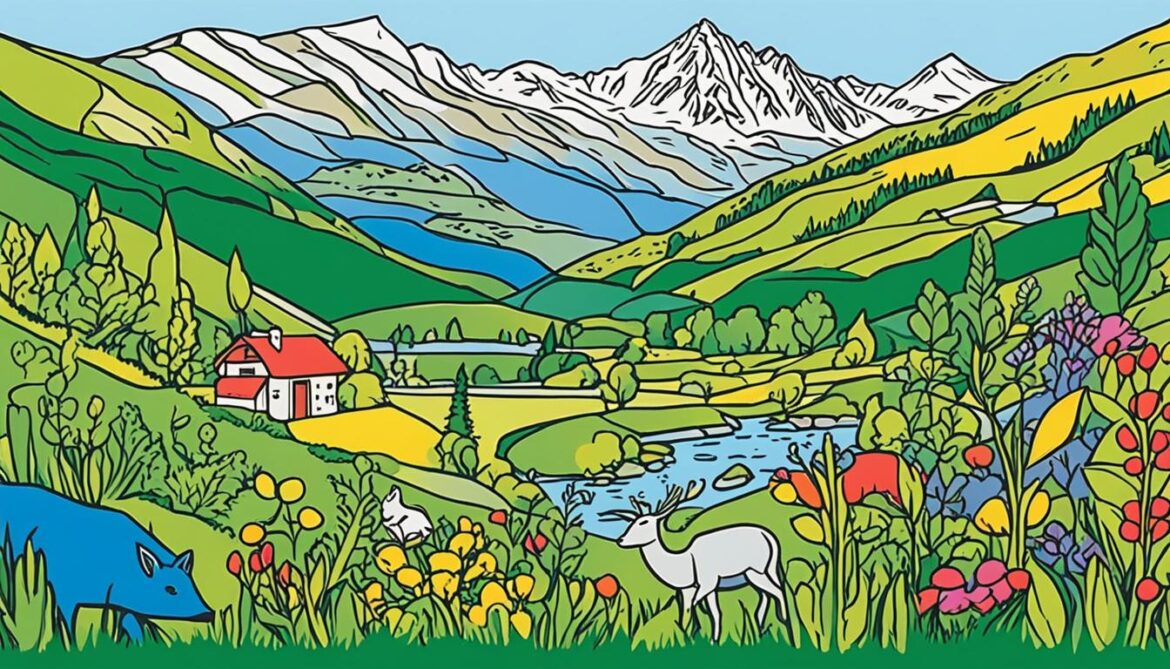
Through conservation efforts and sustainable practices, Kosovo aims to protect its valuable fauna and ensure the long-term preservation of its biodiversity. By safeguarding habitats, promoting responsible tourism, and raising awareness about the importance of wildlife conservation, Kosovo is taking significant steps towards securing the future of its diverse animal species.
National Parks in Kosovo
Two national parks have been established in Kosovo to preserve and protect its rich biodiversity. These national parks, the Bjeshkët e Nemuna National Park and the Sharr Mountains National Park, are essential for the conservation of biodiversity and the protection of the natural heritage of Kosovo.
Bjeshkët e Nemuna National Park
The Bjeshkët e Nemuna National Park is located in the southwestern part of Kosovo and covers an area of 630 km². It encompasses the beautiful Rugova valley, known for its stunning landscapes and diverse range of plant and animal species. The national park offers a sanctuary for numerous endemic and threatened species, contributing to the overall biodiversity of the region.
Sharr Mountains National Park
The Sharr Mountains National Park spans 533 km² in the southern part of the Sharr Mountains and shares its borders with North Macedonia. This national park is renowned for its varied morphology, encompassing towering peaks, ancient forests, and picturesque glacial lakes. The Sharr Mountains National Park is home to a rich biodiversity, offering habitats for numerous plant and animal species.
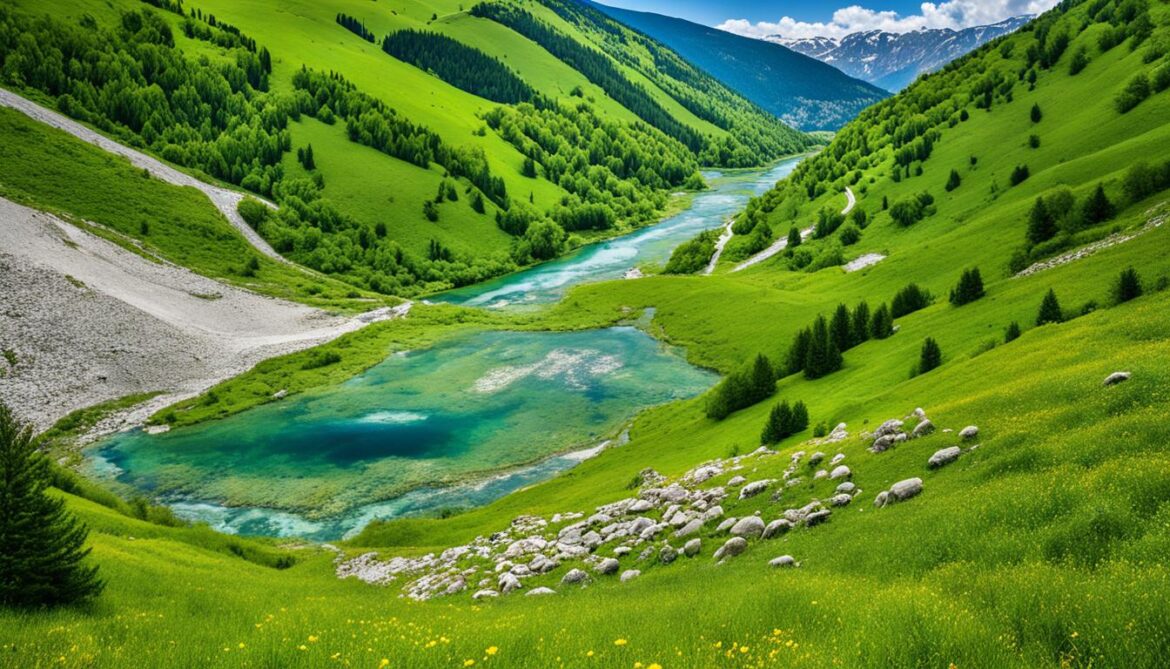
The national parks in Kosovo serve as protected areas that enable the conservation of biodiversity and the preservation of natural ecosystems. They offer opportunities for research, education, and outdoor recreation while promoting sustainable practices and raising awareness about the importance of environmental preservation. Through the establishment and maintenance of these national parks, Kosovo demonstrates its commitment to conserving its unique natural heritage for present and future generations.
Serpentine Flora and the Kosovo Peony
Kosovo is known for its unique serpentine flora, which thrives in rocky outcrops that release toxic heavy metals. These challenging environments are home to plant species that have adapted to survive and even thrive in such conditions. One particularly famous plant is the Kosovo peony, a symbol of the Serbian people. This beautiful flower boasts bright red petals and can be found in specific locations across Kosovo, primarily in the serpentine outcrops.
The serpentine flora in Kosovo is diverse and includes a range of rare species, each contributing to the region’s biodiversity. Alongside the Kosovo peony, other notable species are the Illyrian gladiolus, Serbian tulip, Albanian lily and Hungarian colchicum. Each of these plants brings unique beauty to the landscape and plays an important role in the ecological balance of the region.
“The serpentine flora in Kosovo is a testament to the adaptability and resilience of nature. These plants have managed to thrive in what may seem like inhospitable conditions, showcasing the wonders of biodiversity.”
Rare Plant Species in Kosovo
| Species | Scientific Name |
|---|---|
| Kosovo Peony | Pæonia decora Anders |
| Illyrian Gladiolus | Gladiolus illyricus |
| Serbian Tulip | Tulipa serbica |
| Albanian Lily | Lilium albanicum |
| Hungarian Colchicum | Colchicum hungaricum |

Threats to Biodiversity in Kosovo
Despite the efforts to protect and conserve Kosovo Biodiversity, there are several threats that pose a risk to the rich flora and fauna of the country. These threats must be addressed to ensure the preservation of the unique species and ecosystems in Kosovo.
Habitat Loss and Fragmentation
One of the major threats to biodiversity in Kosovo is habitat loss and fragmentation. Rapid urbanization and deforestation have led to the destruction and fragmentation of natural habitats. This has a detrimental impact on the species that depend on these habitats for their survival. As valuable habitats are replaced by human settlements and infrastructure, the biodiversity within these areas is severely compromised.
Pollution and Its Impact
Pollution, including air, water, and soil pollution, is another significant threat to biodiversity in Kosovo. The release of harmful substances into the environment disrupts the delicate balance of ecosystems and negatively affects the health and well-being of plant and animal species. This pollution can lead to the decline or even extinction of vulnerable species.
Climate Change and Invasive Species
Climate change and the introduction of invasive species further compound the threats to biodiversity in Kosovo. Rising temperatures, changing rainfall patterns, and extreme weather events disrupt ecosystems and put stress on native species. Invasive species, which are non-native and often aggressive, outcompete native species for resources and can cause significant damage to the local ecosystem.
To address these threats and protect the biodiversity of Kosovo, ongoing conservation efforts are essential. The development and implementation of sustainable practices, such as reforestation initiatives, habitat restoration projects, and stricter regulations on pollution, are crucial for the long-term preservation of the country’s unique flora and fauna.
Importance of Tourism in Biodiversity Conservation in Kosovo
Tourism plays a significant role in the conservation of Kosovo Biodiversity. The unique flora and fauna of the country attract tourists who contribute to the economy and support conservation efforts. Sustainable tourism practices, such as eco-tourism and responsible travel, can help protect and preserve the biodiversity of Kosovo.
By promoting sustainable practices and raising awareness about conservation, tourism in Kosovo becomes a catalyst for protecting the natural heritage of the country. Visitors are encouraged to engage in activities that have a positive impact on the environment, such as hiking, birdwatching, and wildlife observation.
One of the key aspects of sustainable tourism in Kosovo is the growth of tourist activities in protected areas, particularly national parks. These parks showcase the rich biodiversity of the region and serve as important ecological corridors for various species.
Tourism in Kosovo is evolving towards responsible and environmentally friendly practices. Tour operators and accommodations are increasingly adopting sustainability measures, including waste management, energy conservation, and support for local communities.
Partnerships and collaborations between the government, local communities, NGOs, and the tourism industry play a vital role in promoting sustainable tourism in Kosovo. Through joint efforts, initiatives can be implemented to ensure that the benefits of tourism contribute to the long-term conservation and protection of the country’s diverse ecosystems.
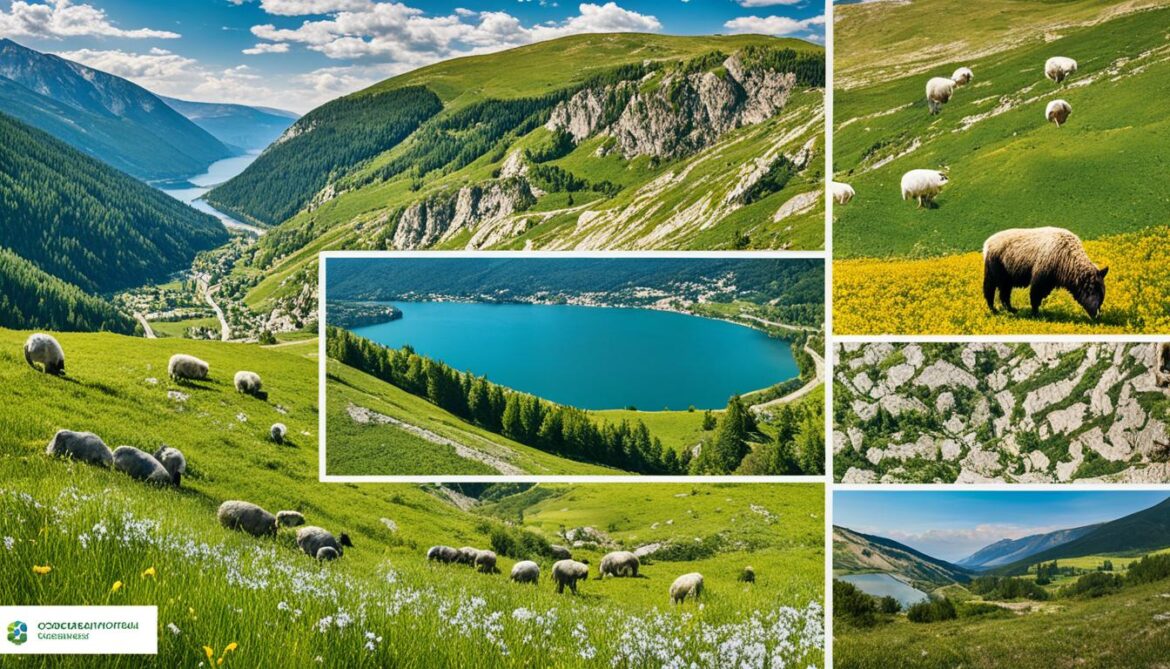
Tourism not only supports local livelihoods but also fosters a sense of responsibility and appreciation for the natural environment. Visitors who experience the beauty and diversity of Kosovo’s biodiversity become advocates for conservation, spreading the message of protecting and preserving the unique species and habitats for future generations.
“Sustainable tourism is not only about enjoying nature, but also about leaving a positive impact on the environment. By engaging in responsible travel practices, tourists can become ambassadors for biodiversity conservation in Kosovo.”
Sustainable Tourism Practices in Kosovo
| Practice | Description |
|---|---|
| Eco-tourism | Encouraging low-impact activities that focus on the appreciation and preservation of natural and cultural heritage. |
| Responsible travel | Choosing accommodations and tour operators that prioritize sustainability, including environmental and social responsibility. |
| Community engagement | Involving local communities in tourism initiatives, empowering them and ensuring they benefit from tourism activities. |
| Education and interpretation | Providing visitors with information and educational resources to raise awareness about biodiversity and conservation efforts. |
| Waste management | Implementing proper waste disposal systems and promoting recycling and reduction of single-use plastics. |
| Energy conservation | Promoting energy-efficient practices in accommodations and encouraging the use of sustainable energy sources. |
By embracing sustainable tourism practices, visitors can actively contribute to the conservation of Kosovo’s biodiversity. Through responsible travel choices and engaging in eco-friendly activities, tourism becomes a means to safeguard the natural heritage of the country while supporting local communities and economic growth.
Challenges and Opportunities for Biodiversity Conservation in Kosovo
Biodiversity conservation in Kosovo is faced with several challenges that threaten the rich ecosystem of the country. Habitat loss due to urbanization and deforestation poses a significant risk to the diverse plant and animal species in Kosovo. Pollution, including air, water, and soil pollution, further exacerbates the threats to biodiversity. Additionally, the impacts of climate change and the introduction of invasive species contribute to the challenges faced in preserving the unique ecosystems of Kosovo.
However, despite these challenges, there are also opportunities for biodiversity conservation in Kosovo. Increasing public awareness about the significance of biodiversity and the need for its protection plays a crucial role in fostering conservation efforts. Promoting sustainable tourism practices can also create opportunities for the protection of natural habitats and ecosystems.
Efforts are being made to address these challenges and create a more sustainable and environmentally friendly future for Kosovo.
Strengthening international cooperation is another opportunity for biodiversity conservation in Kosovo. Collaborative initiatives between government agencies, non-profit organizations, and local communities are essential to achieving successful conservation outcomes.
Sustainable Practices and Conservation Efforts
Implementing sustainable practices is fundamental to ensure the long-term preservation of Kosovo’s biodiversity. By adopting sustainable land use practices and promoting responsible resource management, we can mitigate the negative impacts on the environment and protect valuable ecosystems.
Conservation efforts should include the establishment of protected areas, such as national parks, to safeguard critical habitats and vulnerable species. These protected areas support the conservation of biodiversity and serve as educational and recreational resources for visitors.
Quote: “Conservation is a state of harmony between men and land.” – Aldo Leopold
Financial support for conservation efforts remains a challenge in Kosovo. Inadequate funding limits the capacity to implement comprehensive conservation strategies and monitor ecosystem health effectively.
Despite the challenges faced, Kosovo has the opportunity to create a sustainable and environmentally conscious future. Through collaborative efforts, increased awareness, and the implementation of sustainable practices, the conservation of biodiversity in Kosovo can be actively pursued.
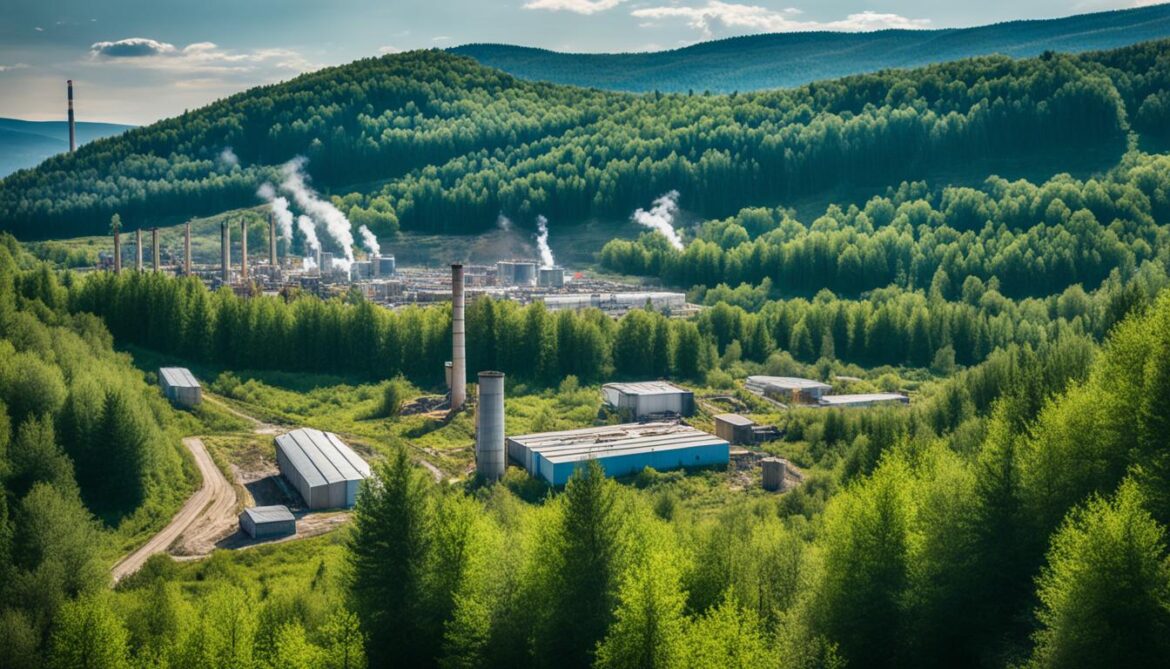
| Challenges | Opportunities |
|---|---|
| Habitat loss due to urbanization and deforestation | Increasing public awareness |
| Pollution (air, water, and soil) | Promoting sustainable tourism practices |
| Climate change | Strengthening international cooperation |
| Invasive species | |
| Inadequate funding for conservation efforts |
Future Prospects for Biodiversity Conservation in Kosovo
The future prospects for biodiversity conservation in Kosovo are dependent on the implementation of sustainable practices and the active engagement of multiple stakeholders. It is crucial to continue safeguarding and preserving the natural habitats and ecosystems throughout the country, ensuring the protection of Kosovo’s unique biodiversity.
To secure the long-term conservation of biodiversity in Kosovo, several key actions need to be taken. Strengthening environmental legislation will provide a robust framework for conservation efforts, enabling effective management and enforcement of protective measures. Enhancing scientific research will improve our understanding of the complex dynamics of the ecosystem, allowing for evidence-based conservation strategies to be developed and implemented.
Education and public awareness play vital roles in fostering a culture of conservation in Kosovo. By actively promoting the importance of biodiversity, we can encourage individuals to make sustainable choices and actively participate in conservation initiatives. As the next generation plays a pivotal role in shaping the future, integrating environmental education into school curricula can raise awareness and instill a sense of responsibility towards preserving the country’s natural heritage.
Promoting Sustainable Development and Responsible Tourism
Sustainable development practices and responsible tourism offer great potential for preserving Kosovo’s biodiversity. By adopting sustainable practices in all sectors, including industry, agriculture, and infrastructure development, we can minimize negative impacts on the environment and create a harmonious balance between economic growth and ecological preservation.
Responsible tourism, supported by guidelines that prioritize the protection of biodiversity, can contribute significantly to the conservation efforts in Kosovo. Encouraging tourists to respect natural habitats, support local communities, and engage in activities that promote conservation will help ensure the sustainability of tourism while preserving the unique species and ecosystems in the country.
Community Engagement and Collaboration
Community engagement is crucial in biodiversity conservation. Empowering local communities to actively participate in conservation initiatives fosters a sense of ownership and responsibility for the protection of their natural surroundings. By involving communities in decision-making processes, their knowledge and experiences can contribute to the development of effective conservation strategies that align with local needs and priorities.
Collaboration between government agencies, non-profit organizations, and local communities is essential in achieving successful biodiversity conservation in Kosovo. By pooling resources, sharing expertise, and coordinating efforts, we can maximize the impact of conservation initiatives and create a united front in preserving Kosovo’s rich biodiversity.
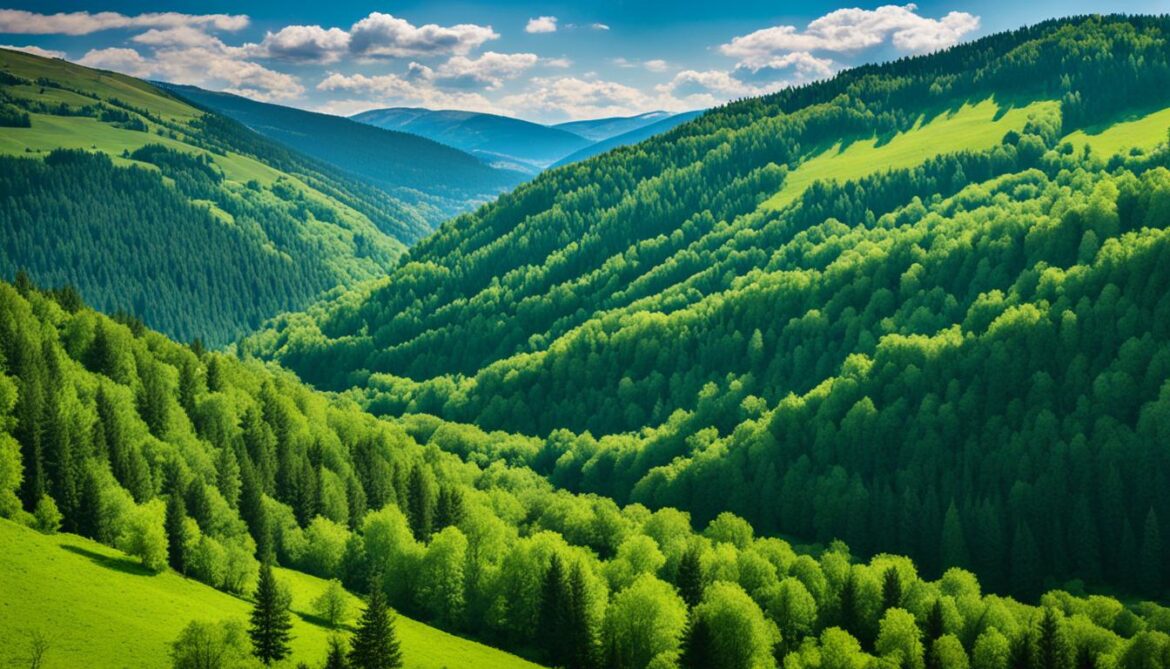
In conclusion, the future of biodiversity conservation in Kosovo hinges on our ability to implement sustainable practices, strengthen environmental legislation, enhance scientific research, promote education and public awareness, and foster community engagement and collaboration. By prioritizing biodiversity conservation, we can ensure the long-term preservation of Kosovo’s diverse ecosystems, protect endangered species, and safeguard the natural heritage for future generations.
Conclusion
Kosovo’s rich biodiversity and diverse ecosystems make it a remarkable country for conservation efforts. The forests, mountains, and national parks of Kosovo provide valuable habitats for a wide range of plant and animal species. However, the threats of habitat loss, pollution, and climate change endanger this precious biodiversity.
In order to ensure the long-term preservation of Kosovo’s unique species and ecosystems, sustainable practices and conservation efforts are crucial. By implementing sustainable practices and promoting responsible tourism, Kosovo can protect its biodiversity while supporting the local economy. Collaboration between government agencies, non-profit organizations, and local communities plays a vital role in successful biodiversity conservation.
With continued dedication to conservation and a commitment to sustainability, Kosovo can overcome these challenges and safeguard its natural heritage for future generations. By valuing and protecting its biodiversity, Kosovo will not only preserve its ecological balance, but also contribute to global efforts in maintaining a sustainable environment.



